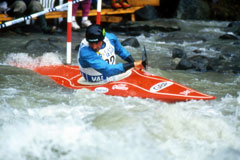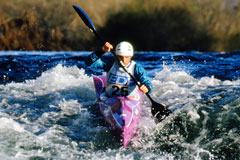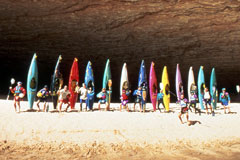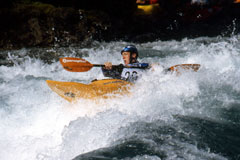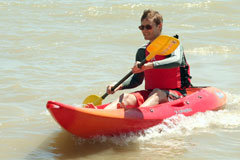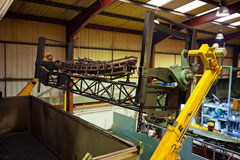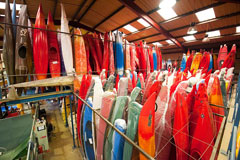1962 |
Paddling since their teens, Graham and Bob Goldsmith join Brighton Canoe Club and begin to compete in Slalom races, working their way from division 4 up to division 1. |
1968 |
Graham and Bob Goldsmith setup Gaybo Ltd and start to make composite slalom boats such as the Pavelbone Funa. Their key motivation is to be able to fund their paddling and travel to wherever the water is. |
1968 |
Graham switches attention from paddling K1 to C1 as the main power base for C1 is in the South. |
1969 |
Gaybo expand their range with boats such as the Delphin White Water Racer (WWR) from Toni Prijon. |
1969 |
Graham Goldsmith competes in his first of nine World Championships, participating in both C1 Slalom and C1 WWR in Bourg St Maurice, France. |
1971 |
Gaybo start building Lettmann kayaks including the Olymp range, the biggest selling slalom design of the time. |
1973 |
Gaybo becomes the first company in the UK to build composite kayaks using Kevlar. This ground breaking move transforms competition kayaks and canoes. It remains a key component in the construction of racing craft today. |
1980 |
Production moves to a purpose built factory in Uckfield, to increase efficiency of fibre glass moulding. |
1986 |
A defining year in Gaybo’s history as they take on the Perception agency for Europe. At this time the Perception range is focussed on the popular Dancer and Mirage kayaks. |
1986 |
Gaybo built their first Polar sled. Designed for Roger Mear & Robert Swan’s ‘In The Footsteps of Scott’ expedition. |
1986 |
Jeremy West breaks Eastern Bloc domination of Sprint competition by winning the 500 and 1000 metre events in his Gaybo Midas. |
1987 |
Graham Goldsmith wins a Bronze medal in WWR C2 at the World Championships in Bourg St Maurice. Ironically the longest standing member of the British Team bows out of competition on the same river as his first World Championship appearance. |
1988 |
Perception’s Chinook becomes the World’s first polyethylene sea touring kayak. |
1989 |
The Perception Kiwi is born and redefines recreational kayaking around the World. This short, stable and easy to paddle kayak with its extremely accessible cockpit has since tempted hundreds of thousands of people onto the water and shown how easy paddling can be... so much is about choosing the right boat. |
1990 |
Production moves to the current location in Uckfield. Again the factory is purpose built but this time to accommodate a new rotational moulding machine. The Dancer and Mirage are the first models into production. |
1993 |
Sir Ranulph Fiennes and Dr Mike Stroud undertake their record breaking, unaided Trans-Antarctic expedition using sleds made by Gaybo. |
1993 |
Richard Fox wins his 5th K1 Slalom World Championship title in Mezzana, Italy. He is paddling a Quattro made by Gaybo. |
1994 |
The Perception SuperSport is introduced as the first kayak in Britain to use the, now industry standard Superlinear Polyethylene. |
1996 |
Perception makes their first sit on tops in the UK to cries that “the water’s too cold”. |
1997 |
The British Canoe Union commissions Gaybo to produce a plastic WWR kayak. The Wavehopper, designed by WWR World Champion Antoine Goetschy is world renowned, has its own racing series and is still made today. |
1998 |
30 years of history comes to an end as the last Gaybo composite slalom, WWR and sprint boats come off the production line. Full attention switches to the rapidly growing demand for Perception kayaks being produced on two rotational moulding machines in the Uckfield plant. |
1999 |
The Perception Carolina is released to the phrase “Introducing the most versatile touring boat we’ve ever made. The Carolina is a roomy new design that is stable, incredibly seaworthy and easy to paddle no matter what your experience or skill level”. Rarely has a truer word been spoken and again Perception leads the way in defining a new aspect of our sport with a user friendly day touring kayak. |
1999 |
Freestyle is at a peak in the UK as Team Perception’s Andy Stuart becomes British National Freestyle Champion. |
2002 |
Team Perception tours the European Freestyle circuit for one last time before Perception refocuses attention into other areas as interest in freestyle declines. |
2002 |
The first Perception Scooter is made and immediately becomes the must-have sit on top for fun seekers across Europe. |
2004 |
Installation is completed on a fully automated, purpose built, oven in Gaybo’s Sussex based factory. This, third, oven is capable of moulding boats up to 6 metres long and 2.5 metres wide. It is quickly, but unimaginatively named “The Big Oven” being the most advanced machine rotationally moulding kayaks in Europe. |
2006 |
Perception celebrates 30 years at the forefront of kayaking development and production. The Perception range numbers over 50 different models available worldwide including white water kayaks, tourers, sit on tops, anglers and recreation kayaks. Gaybo has been with Perception for 20 of those years. |
2007 |
The Dancer turns 25, with one face lift along the way, but shows no sign of retirement just yet. |
2008 |
Gaybo celebrates forty years of passion for paddling and commitment to high quality design and production. |
|
|
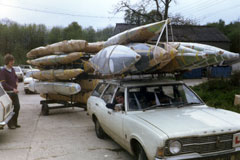
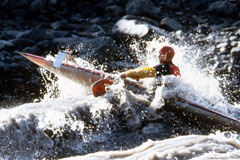
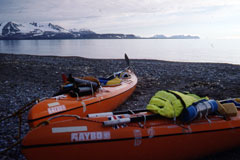
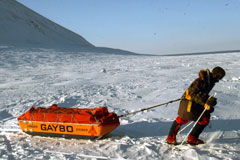
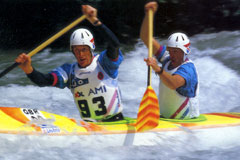
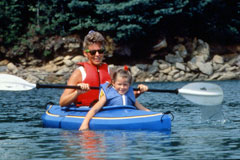
-&-Sir-Ranulph-Fiennes-(right)-at-the-South-Pole-1993.jpg)
